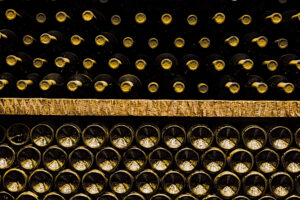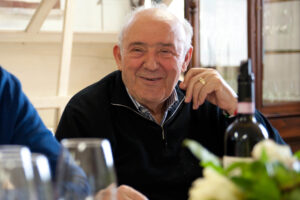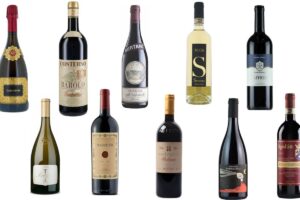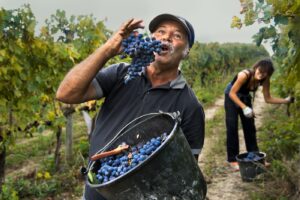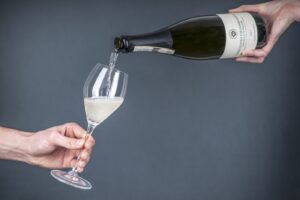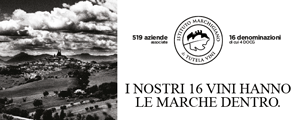On May 11th, the Marchesi Antinori, one of the most celebrated names worldwide among Italian wines, will celebrate the five century anniversary of their Renaissance villa in Florence with a book and a contemporary art exhibition.
WineNews offers a preview of the event with a brief summary of the important moments of this family’s history, the family that has re-launched Italian wine on the world market…
On a cold morning in February of 1506, Niccolò di Tommaso Antinori, one of the richest and most esteemed men of the city of Florence acquired Palazzo Boni for a costly 4,000 florins to consolidate the dignity already acquired by his surname. The prestigious building was designed by Giuliano da Maiano and was located at the then end, but today central part of Via Tornabuoni. It was a, “palace with halls, rooms and offices, a well and vaults… located in the parish of San Michele”, and it was where Niccolò and his entire family went to live.
Austere but not arrogant, like the family that had moved into it, from that day on, the Renaissance style villa, located in the prestigious neighborhood of Santa Maria Novella and considered one of the most monumental and aristocratic residences of Medicean Florence of the second half of the 1500’s, became the home and headquarters of the noble Antinori family, initiating an ideal tradition that has endured unaltered until the present, after 500 years and 26 generations.
Two Celebrations for One Anniversary
To celebrate this important anniversary the Marchesi Antinori, as the impeccable proprietors that they are, will open the doors to their splendid villa with a contemporary art exhibition (11 May – 13 July 2007) entitled “Per Bacco!”, an homage to the magic alchemy of wine, the core of the family’s activities and whose roots has established itself increasingly in their endeavors over the centuries. Together with the opening of this exhibition, will be the release of an elegant volume dedicated to the history of Palazzo Antinori and its proprietors, written by Marchese Piero Antinori himself and published by Alinari.
The Exhibition
Within the internal courtyard of Palazzo Antinori, 21 contemporary artists (20 painters and one sculptor) have been invited by the Antinori family to display a work that they have created completely autonomously and dedicated to the god Bacchus in celebration of this special anniversary. The magic alchemy of wine is to be expressed, among other things, with the intimate and familiar vision of “Bacchus and Ariadne”, a work created by Enzo Prestileo; an homage to pleasure by Giovanni Tommasi Ferroni with “Triumph of Dionysus”, full of oneiric symbols; the expressionistic and irreverent interpretation of “Connoisseurs” by Enrico Robusti, and, finally, “Bacchus Is Drunk” by Luisa Albert, the effeminate young boy of the English Pre-Raphaelite tradition.
The Book
The publication of the volume “Ancient Future – The History of the Antinori Family and its Palazzo” will go on sale to the public at the same time the exhibition begins. A tribute to the wine and notoriety that has continued throughout the centuries for this Florentine family, the book was a project that Marchese Piero Antinori felt strongly about because he wanted to make a personal homage to the 500th anniversary by writing something himself of the movements and enterprises of his forbears inside and outside of the mighty walls of the family home. Within the volume are studies and texts that offer the right mix of pride that a family of entrepreneur winemakers like the Antinori merit having after such a long and continuous success.
The Family
A narration that proceeds in chronological order from the time when the Antinori family moved from the Castello di Combiate near the town of Calenzano and moved to Florence in the late Middle Ages, residing in a villa in the Oltrarno neighborhood. Initially involved in the commerce of wool and silk, the family did not enroll in the Arte dei Vinattieri (Winemaker’s guild) until 1385, the date that marks the first real link to their future in winemaking. The rise of the Antinori reached its apex at the end of the 1400’s, under the governing of Lorenzo il Magnifico, during which time the family became a reference point in the public social life of the city and, with Niccolò di Tommaso’s decision to acquire the villa in Via Tornabuoni in the most noble part of the city as well as country land acquisitions (like those of the San Lorenzo alle Rose Estate and the Villa of Bellosguardo), it only further improved their image.
These were the same years, between the 15th and 16th century, that the production and sales techniques of wine were consolidated and institutionalized, and which have remained unaltered to this day.
Historic documents within the volume recount how, “Those who had villas in Chianti and villas in the city, did direct sales through small doors that were the size of a fiasco bottle, one of which is still visible on the wall of Palazzo Antinori. From this tradition, Niccolò Antinori had the idea in 1957 of creating the Cantinetta Antinori, which still today offers high quality food and wine in the city”. And there is a long list of the members of the family, who throughout the centuries became successful bankers, vendors and entrepreneurs, senators, condottieri, men of letters and dedicated to the arts, up to the most recent endeavor of the 1800’s with the opening of the “Cantine dei Marchesi Lodovico e Piero Antinori”, which definitively crowned the company activities of the family.
Marchese Piero Antinori is presently the owner of the legendary Palazzo Antinori, still jealously held by the family who has for centuries now saved it from the ravages of time and men. Destiny has now decided that there will be three women, daughters Albiera, Allegra and Alessia, to continue the family’s activities, just as it had been a woman five centuries ago (the mother of Niccolò) who suggested the acquisition of the future Palazzo Antinori. Just another good omen for the activities of the Marchesi Antinori who, with the terroir of Tuscany, knew how to make their name one of the most important reference points in the world for quality Italian wine production.
Copyright © 2000/2026
Contatti: info@winenews.it
Seguici anche su Twitter: @WineNewsIt
Seguici anche su Facebook: @winenewsit
Questo articolo è tratto dall'archivio di WineNews - Tutti i diritti riservati - Copyright © 2000/2026










